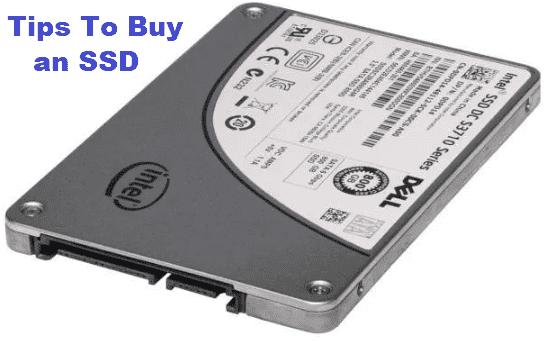Your processor can handle billions of cycles a second, but it often spends a lot of time waiting for your drive to feed it data. The easiest way to slow down a PC with a fast CPU is to pair it with slow storage. Hard drives are particularly sluggish because they have platters that have to spin up and a read/write arm. To get optimal performance, you need a good solid-state drive (SSD). You will determine the best SSD by comparing product specifications and benchmarks:
- Read/write speeds and IOPS for an idea of the fastest SSDs.
- Understanding how the meantime MTBF relates to the most reliable SSDs.
- Installing an SSD in a laptop or desktop PC requires only the most basic technical know-how.

Hopefully, by the end of our guide, you’ll know everything there is to know about buying SSDs. We’ll help steer you to the right brands, teach you about different SSD technology, and explain how much you should be spending for different SSD types.
Here Guide to Buy SSD
Why Buy an SSD?
It’s all regarding the speed. SSDs area unit so much quicker than commonplace exhausting drives and generally less seemingly to interrupt down. As you’ll be able to imagine, moving components aren’t sensible for longevity. exhausting drives will bog down over time and fully fail. exhausting drives, on the opposite hand, area unit a lot of like record players with moving components. a true arm needs to move on the disk to physically write into it. To compare, a high finish 7200 rev drive features a speed of up to 210 MB/s read/write
In terms of real-world performance, this implies a variety of things:
- Programs load quicker
- Much quicker boot-up times
- Less hitching and freezes in video games
- Programs run higher aspect by aspect
- File transfer time is faster
What Types of SSDs are There?
There are two SSD technologies being sold right now.
- SATA 3 AHCI SSD
- NVME SSD.
AHCI is an older, more outdated technology, whilst NVME is far newer and much faster. Both NVME and AHCI are types of software ‘controller’ used to communicate with storage drives. For boot-up times, gaming, or light office work, the speed difference in an NVME and an AHCI SSD is just a few seconds.
Read/write speed:
- 7200 RPM HD – up to 210 MB/s
- SATA 3 SSD – up to 550MB/s
- NVME SSD – up to 3500MB/s
Boot times (estimated):
- 7200 RPM HD – 36 seconds
- SATA 3 SSD Boot time – 9 seconds
- NVME SSD – 6 seconds
How Much Should You Pay For a SATA 3 SSD Drive?
The amount you pay per GB will depend on the brand you choose and the drive capacity. Whilst SSD prices are constantly dropping, they are still more expensive than traditional hard drives.
Price to pay per different capacity drive is as shown below:
- 1TB drive: On average $140
- 500GB drive: On average $60
- 250GB drive: On average $45
- 120GB drive: On average $25
How Much Should You Pay For an NVME Drive?
You must also make sure you have a suitable M.2 connector on your motherboard before you purchase one. As mentioned earlier, NVME drives are more expensive than standard SSD drives.
For a real NVME SSD with full speed potential, you’re looking at the following average prices:
- 1TB drive: On average $245
- 500GB drive: On average $135
- 250GB drive: On average $85
- 120GB drive: On average $55
Which SSD Brands are Reliable?
An interesting experiment showcased that Kingston, Samsung, and Corsair drives survived after writing 1000 TB of data. Other lesser-known brands may not last quite as long. Buying an SSD from a reliable brand is important because flash memory can be a tricky thing to get right. The best thing you can do when choosing a drive is to read customer reviews on longevity and research the brand on the internet for potential issues.
Conclusion
Thanks for reading our SSD shopping for guide. we have a tendency to hope that this guide has been informative enough to assist you to create your next purchase.